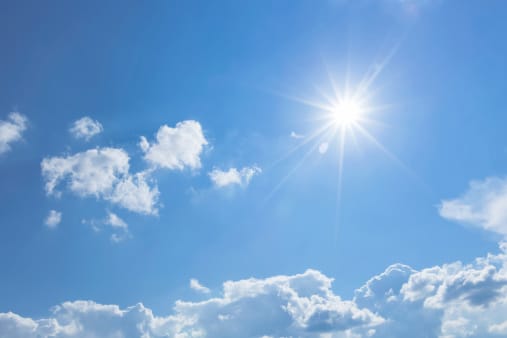
The sun’s heat and radiation can damage a roof system over time and create energy inefficiency, even in a temperate climate. This means building owners have some important decisions to make before construction begins. Knowing how different roofing materials and designs hold up against the power of the sun is the key to selecting a roof system that’s built to last – rather than paying to replace a roof much sooner than is necessary.
Your Roof and the Sun
The sun plays a major role in the performance of every roof system. The sun emits ultraviolet (UV) light that degrades materials over time – even in mild climates – and there is no such thing as sunscreen for a roof. Therefore, it is critical to pick the right roof for the right building in the right location.
Roof UV: Choosing the “Right” Roof
Black roofs absorb light instead of reflecting it. They get hotter faster and stay hot for longer periods of time than white roof installations. This can dramatically increase the cost of cooling the building — especially in the summer months – if the proper amount of insulation is not installed.
However, that doesn’t mean that white is always right. When a roof has high parapet walls, glass or otherwise reflective facades, a white membrane can reflect sunlight directly onto those features, which then reflects it back with twice the intensity. This double reflectivity can concentrate the heat and accelerate roof UV degradation while speeding up material breakdown.
A good rule of thumb when deciding between the two is asking yourself if you use your heater more than your air conditioner. If so, chances are your building is located in a cold-enough climate that installing a black roof will help heat the building and decrease energy costs.
Another good benchmark is the average snowfall in the building’s area. A dark roof installation will help the snow melt by heating up from underneath and removing snow as runoff.
Conversely, white roofs provide value in hot climates where air conditioners might run throughout the year. As an added benefit, some white roofs are eligible for energy efficient rebates.
The Often Overlooked Solution: Insulation
Interestingly, the insulation below the membrane can make all the difference. If the insulation isn’t thick enough, the building’s interior will be subject to environmental changes no matter the color of the membrane, resulting in a spike in energy costs. But once you’ve installed enough insulation (3 inches is typically sufficient), it doesn’t matter if your roof is black, white, green, or purple. With the proper amount of insulation, energy costs will be minimized.
It is critical to work with a contractor who understands how the sun’s light, energy, and radiation affect roofing materials. The planning phase should consider the unique location and climate that each building in the portfolio will face when choosing the color and composition of the roof’s membrane, as well as that of the insulation below.
